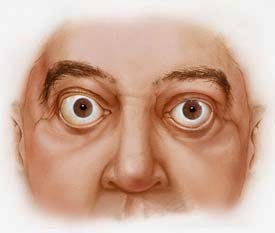High Myopia
High myopia is a chronic, degenerative condition, sometimes referred to as pathological myopia or degenerative myopia. It is a very serious condition of extreme myopia that affects shape of the eye, and finally leading to near vision loss. Short sight of −8.00D or more is regarded as high myopia; it can go up to -20D.it is a very significant health problem that is increasing day by day.
Dye Eye Syndrome
Dry eye syndrome is caused by a chronic lack of sufficient lubrication and moisture on the surface of the eye.it is a condition in which quality or quantity of tears is decreasing.
Dry Eye Symptoms
Causes of Bulging Eyes
Any treatment for bulging eyes will depend entirely on the cause, but may include:
For More Details visit us on www.high-myopia-eye-hospital.com
Email : saraswathieyehospital@gmail.com
High myopia is a chronic, degenerative condition, sometimes referred to as pathological myopia or degenerative myopia. It is a very serious condition of extreme myopia that affects shape of the eye, and finally leading to near vision loss. Short sight of −8.00D or more is regarded as high myopia; it can go up to -20D.it is a very significant health problem that is increasing day by day.
Dye Eye Syndrome
Dry eye syndrome is caused by a chronic lack of sufficient lubrication and moisture on the surface of the eye.it is a condition in which quality or quantity of tears is decreasing.
Dry Eye Symptoms
- Persistent dryness
- Scratchiness
- Red eyes
- Burning sensation
- Foreign body sensation
Bulging Eyes
Bulging eyes is the abnormal protrusion (bulging out) of one or both eyeballs.Bulging in only one eye of a child is a particularly serious sign. Seek medical attention immediately.
Causes of Bulging Eyes
- Glaucoma
- Graves disease
- Hemangioma
- Histiocytosis
- Hyperthyroidism
- Leukemia
- Neuroblastoma
- Orbital cellulitis
- Periorbital cellulitis
- Rhabdomyosarcoma
- Vascular disorders
Any treatment for bulging eyes will depend entirely on the cause, but may include:
- Eye drops
- Sunglasses
- Corticosteroids to ease inflammation
- Surgical procedures to repair damaged arteries and veins
- Surgery, chemotherapy, and radiation to treat tumors
For More Details visit us on www.high-myopia-eye-hospital.com
Email : saraswathieyehospital@gmail.com








